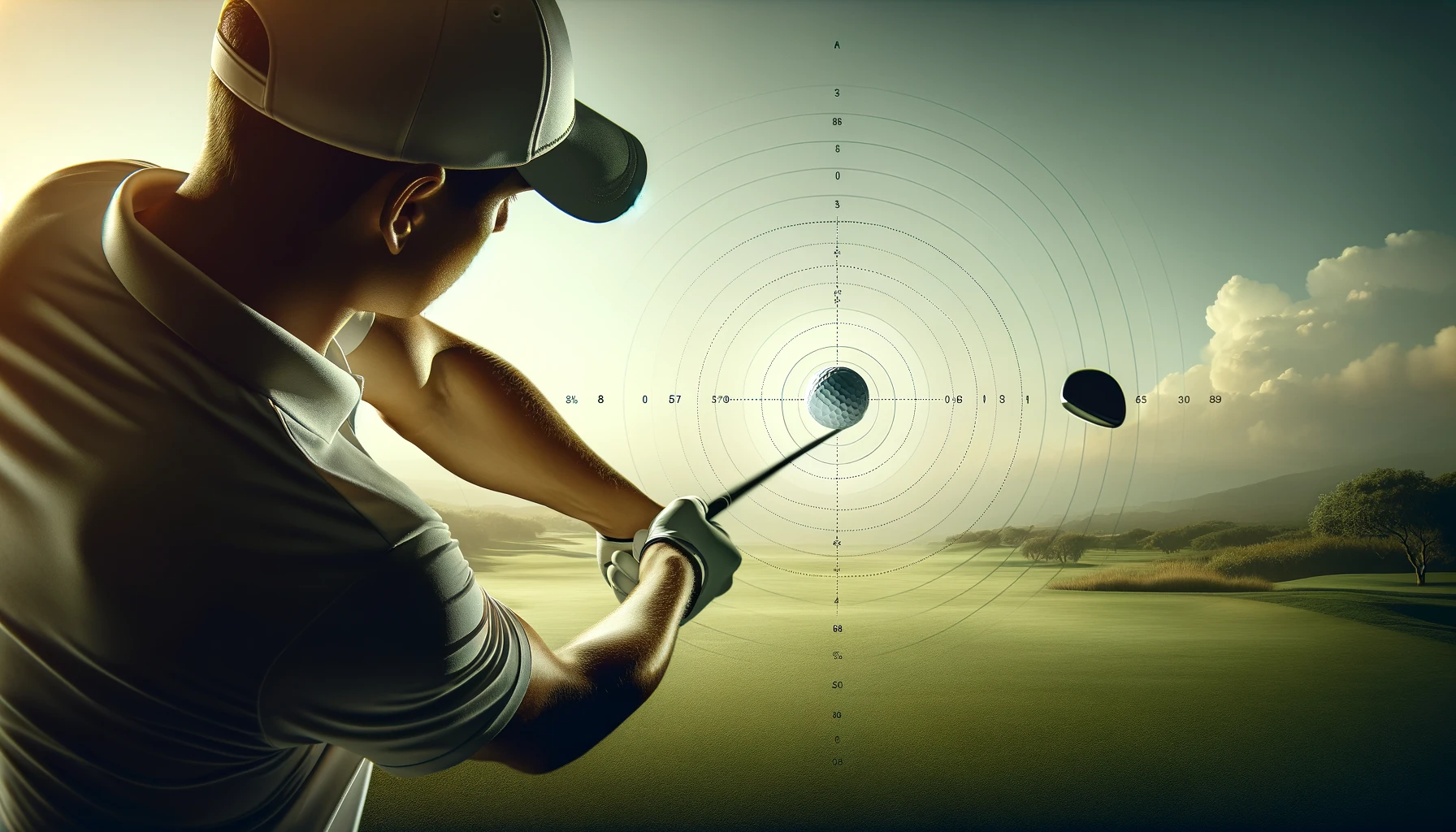Ever wondered how the pros shape their shots and navigate the most challenging courses with ease?
The draw is a powerful and versatile shot shape that can help golfers of all levels to improve their accuracy, distance, and overall scoring potential.
Let’s dive in and explore the ins and outs of the draw, from its defining characteristics to the key techniques required for mastering this essential golf shot.
What is a Draw in Golf?

A draw in golf is a type of shot that curves gently from right to left for right-handed golfers (or left to right for left-handed golfers). It is achieved by aligning the clubface slightly closed relative to the swing path at impact, imparting a right-to-left spin on the ball.
A well-executed draw can offer significant advantages, such as increased distance, improved accuracy, and the ability to navigate around obstacles or shape shots to suit specific course layouts.
Let’s take a closer look at the key characteristics and techniques behind this important shot shape, and explore how you can start incorporating the draw into your own golf game.
Definition Of A Draw In Golf
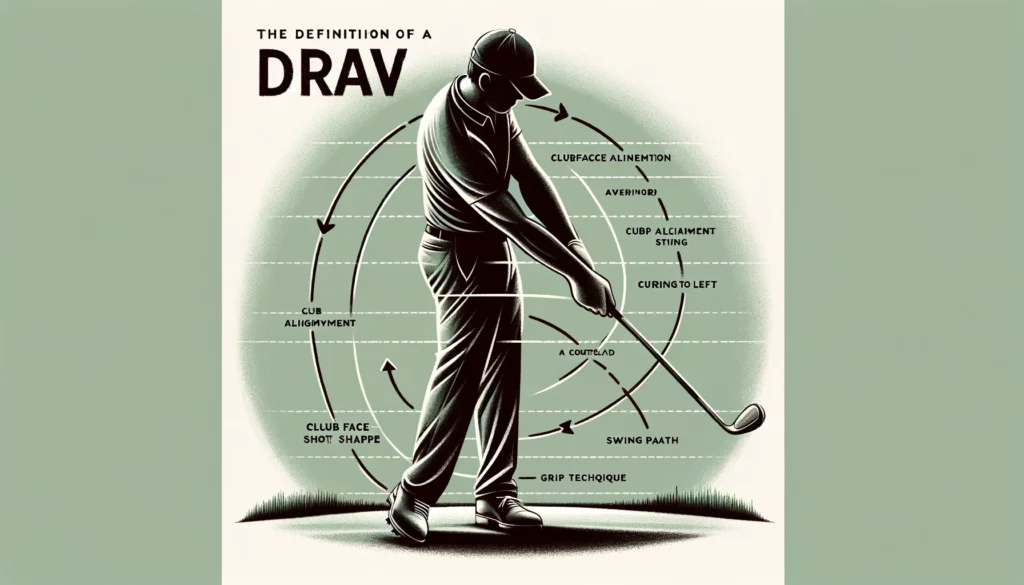
In the game of golf, a draw is a type of shot that curves gently from right to left for right-handed golfers, or left to right for left-handed golfers. This controlled shot shape is achieved through a combination of proper clubface alignment, swing path, and grip technique.
It is important to note that a draw is distinct from a hook, which is a more severe right-to-left curve that can be difficult to control.
A well-executed draw can provide several advantages on the golf course, such as increased distance, improved accuracy, and the ability to navigate around obstacles or shape shots to suit the layout of a particular hole.
When hit correctly, a draw can be a valuable asset in a golfer’s shotmaking arsenal, allowing them to adapt to various course conditions and attack pin positions with confidence.
Characteristics Of A Draw Shot

A properly executed draw shot possesses a distinct ball flight path and trajectory that sets it apart from other types of shots in golf.
When a draw is hit, the ball will initially start out slightly to the right of the target line (for right-handed golfers) before gently curving back to the left and landing on or near the intended target.
This curved flight path is the result of a specific combination of spin and speed imparted on the ball at impact. To generate the right-to-left spin necessary for a draw, the clubface must be slightly closed relative to the swing path at the moment of contact.
This means that the clubface is pointing slightly to the left of the swing path, which creates a subtle right-to-left sidespin on the ball.
The ideal spin rate for a draw will vary depending on factors such as clubhead speed, ball type, and environmental conditions, but generally falls within a range of 2,000 to 3,000 revolutions per minute (RPM).
When executed properly, a draw can have a positive impact on both distance and accuracy. The right-to-left spin imparted on the ball can help to increase carry distance, as the ball will typically have a lower, more penetrating ball flight compared to a straight shot or fade.
Additionally, the gentle curvature of a draw can help golfers to avoid obstacles such as trees or bunkers, and can be used to shape shots around doglegs or position the ball more favorably on the fairway or green.
However, it is important to note that mastering the draw shot requires practice and skill, as an overly aggressive or poorly executed attempt can result in a hook or a pull that misses the target by a wide margin.
Situations When A Draw Is Useful

While a draw can be a useful shot shape in a variety of situations on the golf course, there are certain scenarios where it can be particularly advantageous. One common situation where a draw is helpful is when navigating dogleg holes, particularly those that curve from right to left.
By starting the ball out to the right and allowing it to curve back to the left, golfers can often shorten the effective playing distance of the hole and set themselves up for a better approach shot into the green.
This strategy can be especially effective on par-4 or par-5 holes with sharp doglegs, as a well-placed draw can help golfers to cut the corner and avoid the need for a longer, more difficult second or third shot.
Another situation where a draw can be useful is when trying to overcome obstacles such as trees, bunkers, or water hazards. By shaping the ball from right to left, golfers can often navigate around these obstacles more easily than with a straight shot or fade.
For example, if a golfer’s ball is positioned behind a tree with the pin located to the left, a draw shot can be used to curve the ball around the tree and back towards the target, rather than having to hit a more difficult straight shot or punch out sideways.
Adapting to wind conditions is another scenario where a draw can be beneficial.
When faced with a strong left-to-right crosswind, hitting a draw can help to counteract the wind’s effects and keep the ball on a straighter flight path towards the target.
This is because the right-to-left spin of the draw will work against the left-to-right force of the wind, helping to neutralize its impact and maintain a more controlled ball flight.
Finally, a draw can be a valuable tool for attacking pin positions that are tucked on the left side of the green or protected by bunkers or other hazards.
By starting the ball out to the right and allowing it to curve back towards the pin, golfers can often get the ball closer to the hole and set themselves up for a better birdie opportunity.
This is particularly true on approach shots where the pin is located on the left side of a green that slopes from right to left, as the natural contours of the green will work in concert with the draw spin to funnel the ball towards the hole.
Key Techniques For Hitting A Draw
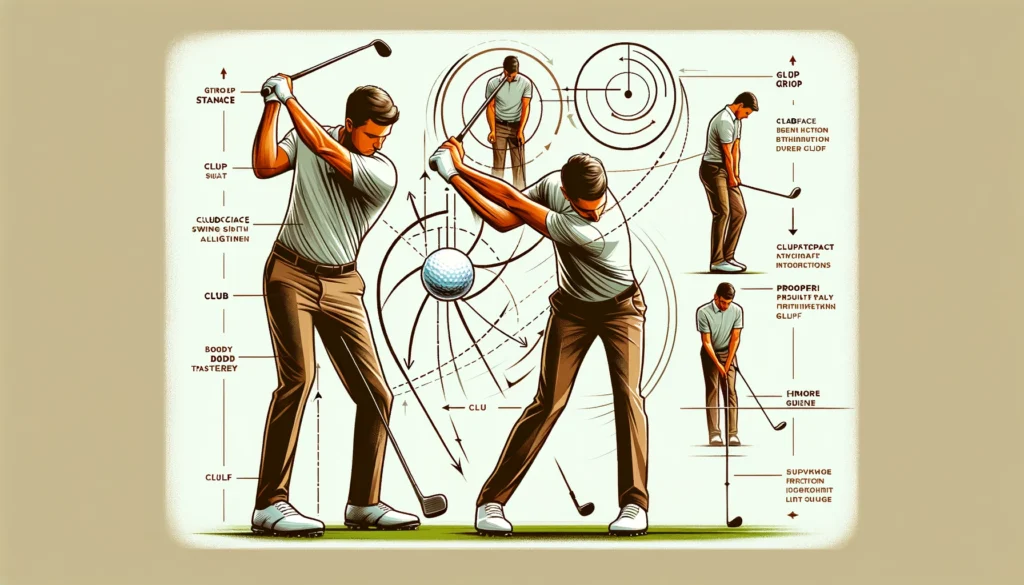
To consistently hit a draw shot in golf, there are several key techniques that golfers need to master, including grip and stance adjustments, clubface and swing path alignment, and proper body rotation and weight transfer.
One of the first steps in hitting a draw is to adjust your grip on the club.
To promote a draw, many golfers will strengthen their grip slightly, which means rotating the hands a bit more towards the right (for right-handed golfers).
This helps to close the clubface relative to the swing path, which is necessary for creating the right-to-left spin that characterizes a draw shot.
It’s important not to overdo this grip adjustment, however, as an excessively strong grip can lead to a hook or a pull. In addition to the grip, golfers may also need to make minor adjustments to their stance when attempting to hit a draw.
A slightly closed stance, where the feet and shoulders are aligned slightly to the right of the target line (again, for right-handed golfers), can help to promote an in-to-out swing path that is conducive to hitting a draw.
This closed stance position helps to create more room for the arms and club to swing from inside the target line, which is essential for generating the right-to-left spin on the ball.
Another critical aspect of hitting a draw is ensuring proper clubface and swing path alignment at impact. As mentioned earlier, the clubface needs to be slightly closed relative to the swing path at the moment of contact in order to create the necessary right-to-left spin.
To achieve this, golfers should focus on swinging the club along an in-to-out path, where the club is moving from inside the target line on the downswing and then back out towards the target at impact.
This in-to-out swing path, combined with a slightly closed clubface, will help to start the ball to the right of the target before curving it back to the left.
Proper body rotation and weight transfer are also key elements in executing a successful draw shot.
During the backswing, golfers should focus on making a full shoulder turn while maintaining a stable lower body, with the majority of their weight on the inside of the right foot (for right-handed golfers).
As the downswing begins, the weight should shift smoothly towards the left side, with the hips and shoulders rotating aggressively through impact.
This combination of body rotation and weight transfer helps to create the necessary clubhead speed and swing path for generating a powerful, well-controlled draw shot.
To ingrain these techniques and build confidence in your ability to hit a draw, it’s important to practice regularly and incorporate specific drills into your training routine.
One effective drill is to place an alignment stick on the ground just outside the ball, pointing slightly to the right of your target (for right-handed golfers).
As you make your swing, focus on starting the clubhead inside the alignment stick and then swinging out towards the target, with the clubface slightly closed at impact.
This drill can help to groove an in-to-out swing path and promote the proper clubface alignment for hitting a draw.
Another useful drill is to practice hitting draws with a shorter club, such as a pitching wedge or 9-iron, before progressing to longer clubs like your driver or fairway woods.
The shorter clubs are generally easier to control and can help you to develop a feel for the proper swing path and clubface position before moving on to more challenging clubs.
By consistently practicing these techniques and drills, golfers can develop the skills and confidence needed to hit a reliable draw shot on the course when the situation calls for it.
Common Misconceptions About Drawing The Ball
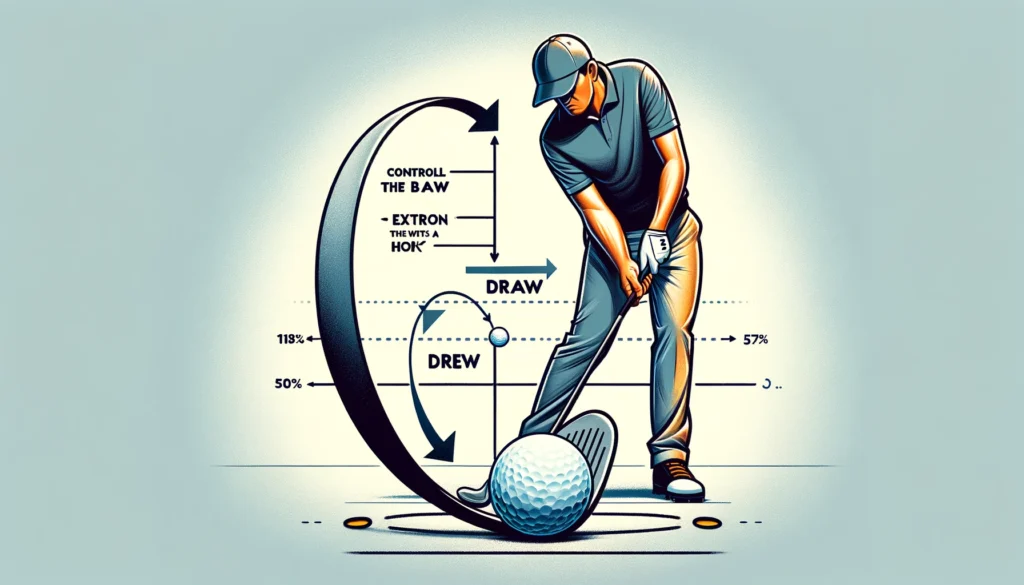
Despite being a highly sought-after shot shape among golfers, there are several common misconceptions surrounding the draw that can lead to confusion and frustration on the course. One of the most prevalent misconceptions is the idea that a draw is the same thing as a hook.
While both shots feature a right-to-left curvature (for right-handed golfers), a hook is a much more severe and often uncontrollable shot that can lead to significant accuracy issues.
A draw, on the other hand, is a more subtle and controlled shot shape that is intentionally used to navigate specific course challenges or improve overall ball flight.
Another misconception is that hitting a draw is a skill reserved only for advanced or professional golfers. While it’s true that mastering a consistent draw requires practice and skill development, golfers of all levels can learn to incorporate this shot shape into their repertoire.
By understanding the key techniques and practicing regularly, even beginners can start to see improvement in their ability to shape shots and adapt to different course conditions.
A third common misconception is the belief that hitting a draw will always result in a loss of distance compared to a straight shot or fade.
While it’s true that a draw can sometimes sacrifice a small amount of distance due to its slightly lower ball flight, the difference is often negligible and can be offset by the increased roll and accuracy that a well-struck draw can provide.
In fact, many golfers find that they actually gain distance with a draw, as the right-to-left spin can help to promote a more penetrating ball flight and greater overall carry.
Finally, some golfers underestimate the importance of practice when it comes to developing a reliable draw shot. Like any other skill in golf, hitting a consistent draw requires regular practice and repetition to ingrain the proper techniques and build muscle memory.
Simply trying to “wing it” on the course without putting in the necessary work on the driving range can lead to inconsistency and frustration.
To truly master the draw, golfers must be willing to dedicate time and effort to honing their skills through structured practice sessions and drills.
Troubleshooting Draw Shot Problems
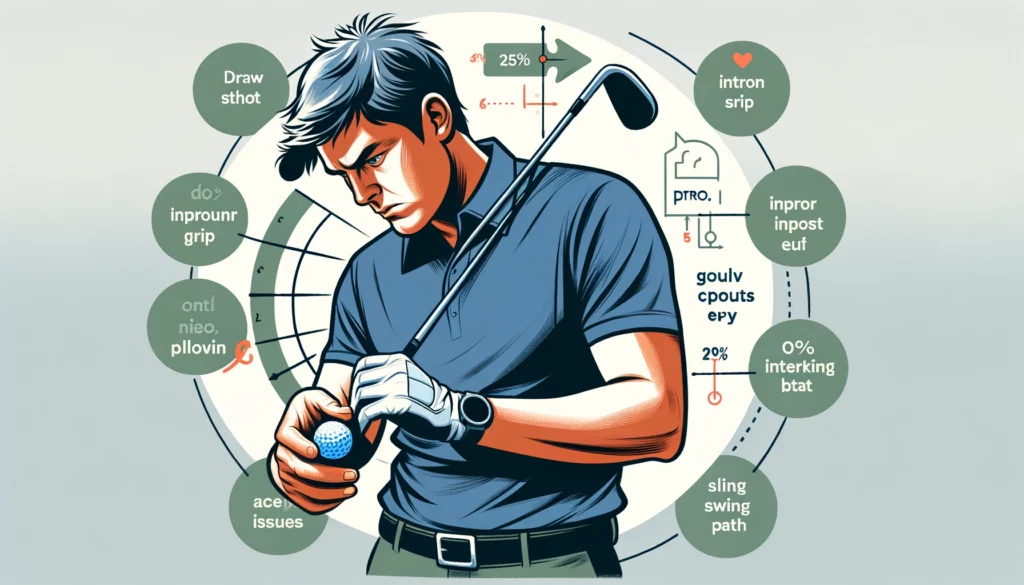
Even golfers who have a solid understanding of the techniques required to hit a draw can sometimes struggle with consistency or accuracy issues.
When this happens, it’s important to take a step back and analyze the root causes of the problem in order to make the necessary adjustments and get back on track.
One common issue that golfers face when trying to hit a draw is a pull or a hook, where the ball starts out too far to the left and continues to curve excessively in that direction.
This can be caused by a number of factors, including an overly strong grip, a closed clubface at impact, or an excessively in-to-out swing path.
To fix these issues, golfers may need to make adjustments to their grip, stance, or swing mechanics to promote a more neutral clubface position and a slightly less aggressive in-to-out swing path.
Another problem that can arise when attempting to hit a draw is difficulty starting the ball to the right of the target line.
This can be caused by an open clubface at impact, an out-to-in swing path, or a lack of proper body rotation through the shot.
To address these issues, golfers should focus on closing the clubface slightly at impact, swinging more from the inside, and making a full shoulder turn and hip rotation to promote the right-to-left spin needed for a draw.
In some cases, golfers may struggle with draw shots due to mental barriers or confidence issues. The fear of hitting a hook or losing control of the ball can lead to tentative swings and inconsistent results.
To overcome these mental obstacles, golfers should focus on developing a positive mindset and visualizing successful draw shots before each attempt. Practicing regularly and celebrating small victories can also help to build confidence over time.
If draw shot problems persist despite making adjustments and practicing regularly, it may be beneficial to seek out professional instruction from a qualified teaching pro.
A knowledgeable instructor can analyze your swing mechanics, identify any technical flaws or bad habits, and provide personalized drills and feedback to help you improve your draw shot consistency and accuracy.
They can also offer guidance on course management strategies and help you develop a better understanding of when and how to incorporate draw shots into your overall game plan.
Remember, mastering the draw shot is a journey that requires patience, dedication, and a willingness to learn and adapt.
By staying committed to the process and continuously working to refine your technique, you can overcome common problems and build confidence in your ability to hit reliable draw shots when you need them most.
Incorporating A Draw Into Your Golf Strategy
Once you have developed a consistent and reliable draw shot, it’s important to understand how to incorporate this valuable tool into your overall golf strategy.
To do this effectively, you must learn to assess when a draw is the best shot choice for a given situation, taking into account factors such as hole layout, wind conditions, and your own strengths and weaknesses as a player.
One key aspect of incorporating a draw into your strategy is learning to plan your shots based on the specific layout of each hole.
This means carefully studying the course map or yardage book before your round, taking note of any doglegs, hazards, or other features that might impact your shot selection.
When you identify a hole that sets up well for a draw, such as a right-to-left dogleg or a pin position tucked on the left side of the green, make a mental note to consider this shot option when you reach that particular hole.
Another important element of incorporating a draw into your strategy is practicing this shot shape regularly on the driving range.
While it’s important to work on hitting draws with all of your clubs, pay particular attention to the clubs you are most likely to use off the tee or on approach shots, such as your driver, fairway woods, and irons.
By dedicating a portion of your practice time specifically to hitting draws, you can build confidence and consistency with this shot shape, making it easier to execute on the course when needed.
In addition to practicing your draw, it’s also important to build confidence in your ability to shape shots and adapt to different situations on the course.
This means embracing the challenge of hitting draws when the opportunity arises, even if you don’t always execute the shot perfectly.
Remember, even the best golfers in the world hit errant shots from time to time. The key is to stay focused on the process, learn from your mistakes, and maintain a positive attitude as you continue to work on your draw shot skills.
Ultimately, incorporating a draw into your golf strategy is about understanding your own game and playing to your strengths while also being able to adapt to the unique challenges of each course.
By developing a consistent draw shot and learning when and how to deploy it effectively, you can add a valuable weapon to your golfing arsenal and give yourself a competitive edge on the course.
Famous Golfers Known For Their Draw Shots
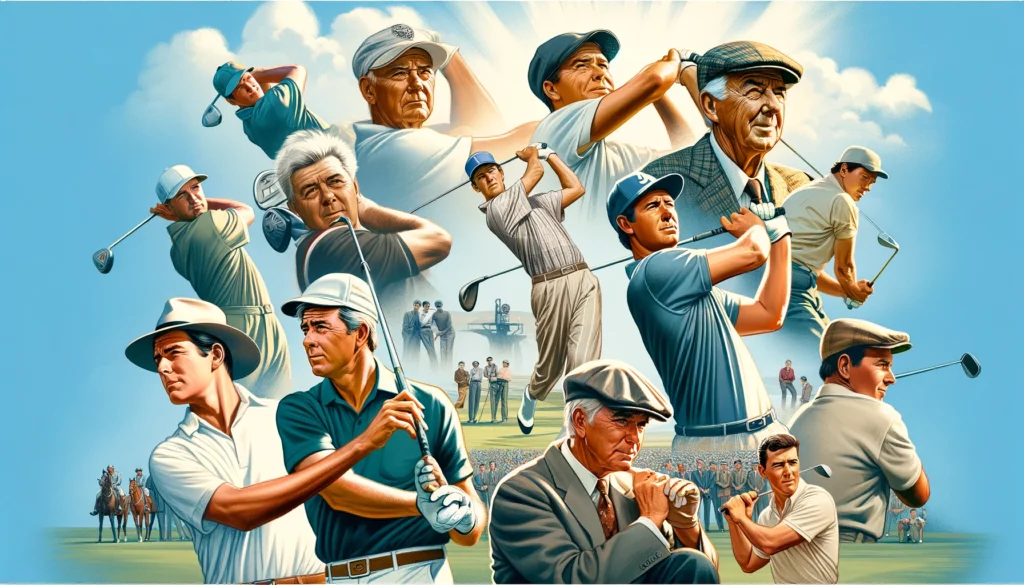
Throughout the history of golf, there have been many notable players who have become known for their exceptional ability to hit draw shots consistently and effectively.
These golfers have utilized the draw as a key component of their overall game strategy, shaping shots to suit the unique demands of each course and situation.
One of the most famous golfers known for his masterful draw shot was Ben Hogan.
Hogan’s compact, powerful swing and ability to control the flight of his ball with precision earned him the nickname “The Hawk” and helped him to win nine major championships over the course of his illustrious career.
Hogan’s draw was a thing of beauty, starting out to the right of his target before curving gently back to the left and landing softly on the green. Another legendary golfer known for his draw shot was Lee Trevino.
Trevino’s unconventional swing and ability to work the ball from right to left helped him to win six major championships and establish himself as one of the greatest players of his generation.
Trevino’s draw was a key element of his “Merry Mex” persona, and he often used it to great effect to navigate difficult course layouts and outmaneuver his opponents.
In more recent years, several modern golfers have become known for their exceptional draw shots.
Rory McIlroy, for example, has used his powerful draw to great effect on some of the world’s most challenging courses, winning four major championships and establishing himself as one of the most talented players of his generation.
McIlroy’s ability to hit high, long draws with his driver and irons has helped him to overpower many courses and set up numerous scoring opportunities. Another contemporary player known for his draw shot is Bubba Watson.
Watson’s self-taught, unorthodox swing and ability to hit massive draws have made him a fan favorite and helped him to win two Masters Championships.
Watson’s draw is a thing of wonder, often starting out far to the right of his target before curving dramatically back to the left and landing in perfect position.
Finally, Dustin Johnson is another modern golfer who has used his draw shot to great effect throughout his career. Johnson’s athletic swing and ability to hit towering draws with his driver have helped him to win numerous tournaments, including two major championships.
Johnson’s draw is a key element of his prodigious length off the tee, allowing him to carry the ball huge distances while still maintaining accuracy and control.
These famous golfers, along with countless others throughout the history of the game, have demonstrated the incredible value and versatility of the draw shot.
By mastering this challenging but rewarding shot shape, they have elevated their games to the highest levels and established themselves as some of the most skilled and accomplished players in the sport of golf.
For aspiring golfers looking to improve their own games, studying the techniques and strategies of these draw shot masters can provide valuable insights and inspiration as they work to develop their own skills on the course.
Conclusion
In conclusion, the draw is a valuable shot shape that every golfer should strive to master.
By understanding the key characteristics and techniques required to execute a proper draw, golfers can add a powerful tool to their shotmaking arsenal and gain a significant advantage on the course.
While the draw can be a challenging shot to learn, with practice and dedication, golfers of all skill levels can develop the ability to hit consistent, accurate draws when the situation calls for it.
Incorporating the draw into your overall golf strategy and learning from the examples set by legendary players can help you to elevate your game and reach your full potential on the links.
